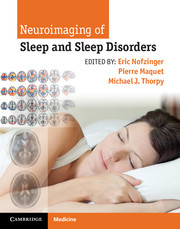
- Cited by 4
-
Cited byCrossref Citations
This Book has been cited by the following publications. This list is generated based on data provided by Crossref.
Scullin, Michael K. 2017. Do Older Adults Need Sleep? A Review of Neuroimaging, Sleep, and Aging Studies. Current Sleep Medicine Reports, Vol. 3, Issue. 3, p. 204.
Kung, Yi‐Chia Li, Chia‐Wei Chen, Shuo Chen, Sharon Chia‐Ju Lo, Chun‐Yi Z. Lane, Timothy J. Biswal, Bharat Wu, Changwei W. and Lin, Ching‐Po 2019. Instability of brain connectivity during nonrapid eye movement sleep reflects altered properties of information integration. Human Brain Mapping, Vol. 40, Issue. 11, p. 3192.
Schulz, Hartmut 2022. The history of sleep research and sleep medicine in Europe. Journal of Sleep Research, Vol. 31, Issue. 4,
Aquino, Giulia and Schiel, Julian E. 2023. Neuroimaging in insomnia: Review and reconsiderations. Journal of Sleep Research, Vol. 32, Issue. 6,
- Publisher:
- Cambridge University Press
- Online publication date:
- March 2013
- Print publication year:
- 2013
- Online ISBN:
- 9781139088268




